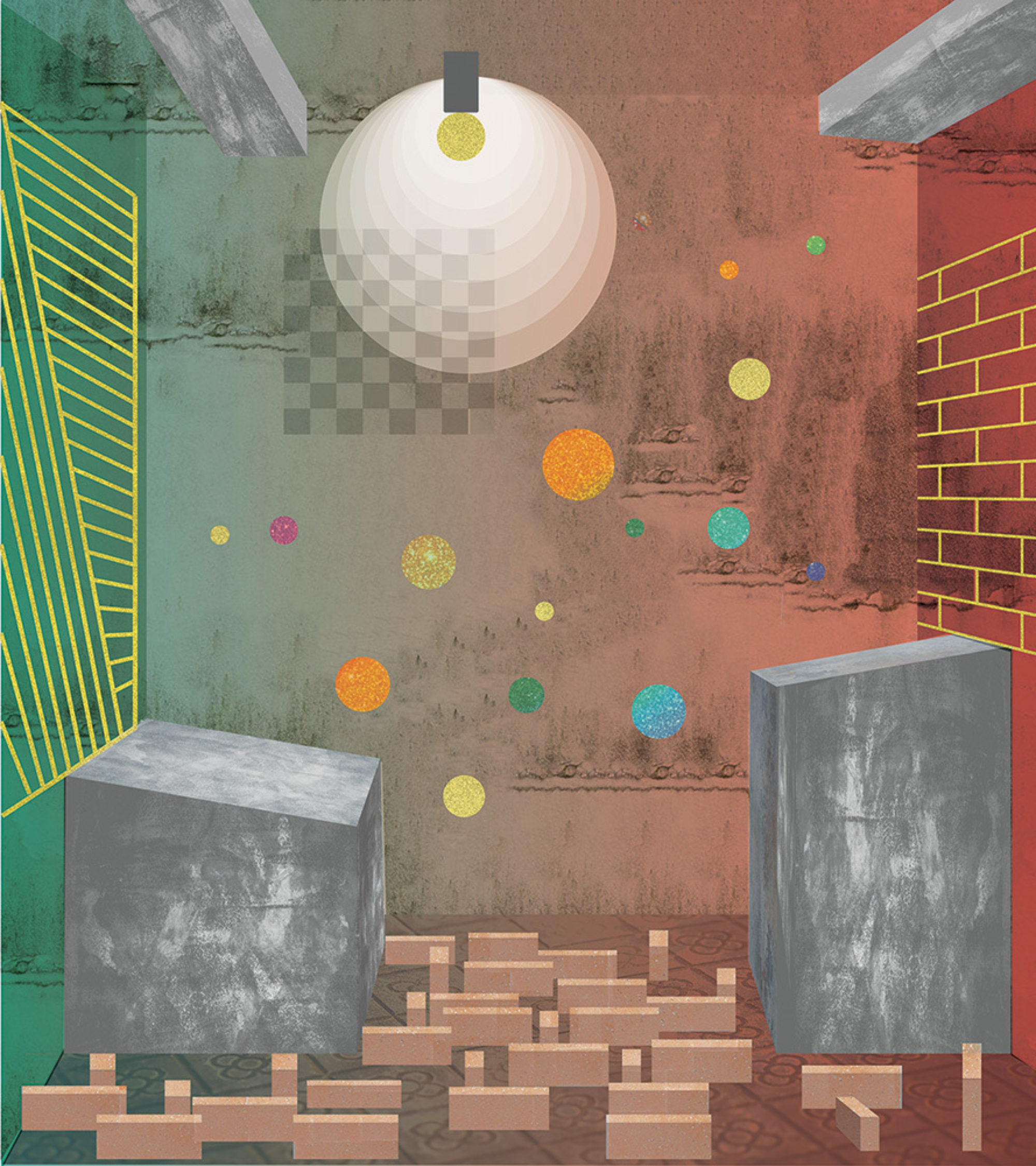- Exhibition
The Almighty Church of Abolition
Daniel Jonas-Roche & Andrew Santa Lucia
12 Aug–30 Sep 2022

The Almighty Church of Abolition (ACAB) is a space dedicated to prison abolitionists inspired by cells designed during the Spanish Civil War for detainees of Franco’s Nationalist Army, e.g. fascists. The cells’ architect, Alphonse Laurencic (1902-1939)—a French painter, architect, and anarchist in the Republican Army—was later executed for his architecture after Franco captured Barcelona. These ‘Checas’, as Laurencic called them before his death, were built in the basements of cathedrals in Barcelona, Valencia, and Murgia. Certainly, the Checas’ locations in church basements were not coincidental, as Laurencic intended them to provide their detainees a transcendental experience, to purge them of their fascism. Later, Nazi officers described Laurencic’s Checas as examples of the “barbarism” of both socialism and modern art, in a similar light to how Paul Klee’s work was derided as “degenerate.”
There is an inherent contradiction in our re-origination of Laurencic’s Checas that is of interest to us all: namely the tension between wanting some type of punitive justice enacted upon the perpetrators of the worst acts of fascist violence, whilst knowing that carceral and punitive measures undermine any possibility of reparative or restorative justice. As both Sonya Renee Taylor and Derecka Purnell have taught us, justice and accountability occur within communities of care; without these communities of care the only type of response possible is punishment.
To explore these complexities, artists Andrew Santa Lucia and Daniel Jonas-Roche chose to revisit and re-originate Alphonse Laurencic’s work, at a time when both antifascism and prison abolition are immensely important subjects for discussion. Inspired by the writings of Angela Davis, Ruth Wilson Gilmore, Mariame Kaba, and many others—ACAB comes after Santa Lucia’s span as a prison abolitionist, activist, artist, and educator; and Jonas-Roche’s work researching socialist art and architecture. Together, the architects explore similar themes in tangential research endeavors, including a long-term book project about antifascist architecture with an accompanying altar dedicated to these buildings on view at UIUC.
Working within the confines of p11—a 400 square foot space below ground with no natural light in the Chicago Pedway more akin to an airport chapel than an art gallery—ACAB deploys different mediums (colored glass block, tinted lighting, glitter, supergraphics and paint) in order to test the ‘degenerate’ effects of Laurencic’s Checa architecture palette. If Klee and Laurencic are correct and fascists are indeed allergic to these forms of art & architecture, then perhaps they are most apt for an aesthetic of abolition and antifascism. Moreover, the architects hope their interventions make the space situated several stories below ground feel exuberant, free, and expansive. As bail funds are the most direct means of decarceration, the artists encourage visitors to both contemplate the steps they can take to abolish the US prison-industrial complex as well as make a contribution to the Chicago Community Bond Fund: an organization that pays bonds for people charged with crimes in Cook County, Illinois. The Bond Fund’s QR code can be found on the Altar for Bail Funds in the back.
Daniel Jonas-Roche is an adjunct professor, curator, and writer in New York originally from Boston. He researches socialist art and architecture, labor history, and internet culture. His forthcoming book with DOM Publishers is called “The Sloanist City: Alfred Sloan, Post-Fordism, and American Apartheid”. It focuses on the architect of post-Fordism and the modern corporation, Alfred Sloan, and how his approach to corporate governance at General Motors impacted the built environment throughout the twentieth century into the present. Jonas-Roche’s writings can be found in the New York Review of Architecture, Architects Newspaper, Pidgin, and PLAT. He currently teaches history and theory at Kean University School of Public Architecture.
Andrew Santa Lucia is a Cuban American designer, educator, and critic based in Portland, Oregon. He is Assistant Professor of Practice at Portland State University’s School of Architecture, where he teaches design studio, history/theory/criticism seminars, and is graduate thesis coordinator. He has lectured and exhibited internationally, including Art Basel, the Chicago Architecture Biennial and the Venice Biennale for Architecture. Andrew’s writing can be found in a broad range of media including ACSA, Architect’s Newspaper, Artlurker, Bad at Sports, Dichotomy, EVOLO, MAS Context and Luxury Home Quarterly. He runs Office Andorus, which designs architecture for activists, institutions and private clients with the goal of influencing public perceptions through the architectural discipline. His work is a hybrid of bold colors, graphics, and shapes used to translate and amplify contemporary issues of social justice through aesthetics.